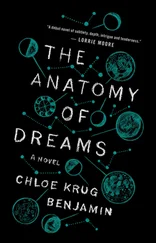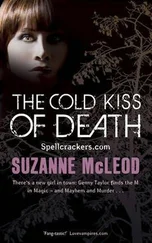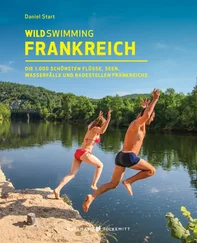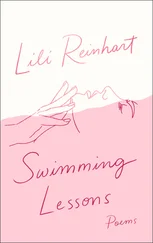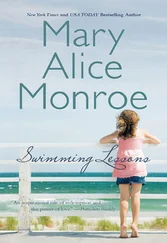McLeod Ian - Swimming Anatomy
Здесь есть возможность читать онлайн «McLeod Ian - Swimming Anatomy» весь текст электронной книги совершенно бесплатно (целиком полную версию без сокращений). В некоторых случаях можно слушать аудио, скачать через торрент в формате fb2 и присутствует краткое содержание. Год выпуска: 2009, ISBN: 2009, Жанр: Природа и животные, на английском языке. Описание произведения, (предисловие) а так же отзывы посетителей доступны на портале библиотеки ЛибКат.
- Название:Swimming Anatomy
- Автор:
- Жанр:
- Год:2009
- ISBN:978-0736075718
- Рейтинг книги:5 / 5. Голосов: 1
-
Избранное:Добавить в избранное
- Отзывы:
-
Ваша оценка:
- 100
- 1
- 2
- 3
- 4
- 5
Swimming Anatomy: краткое содержание, описание и аннотация
Предлагаем к чтению аннотацию, описание, краткое содержание или предисловие (зависит от того, что написал сам автор книги «Swimming Anatomy»). Если вы не нашли необходимую информацию о книге — напишите в комментариях, мы постараемся отыскать её.
Swimming Anatomy — читать онлайн бесплатно полную книгу (весь текст) целиком
Ниже представлен текст книги, разбитый по страницам. Система сохранения места последней прочитанной страницы, позволяет с удобством читать онлайн бесплатно книгу «Swimming Anatomy», без необходимости каждый раз заново искать на чём Вы остановились. Поставьте закладку, и сможете в любой момент перейти на страницу, на которой закончили чтение.
Интервал:
Закладка:

Primary muscles

Secondary muscles

Connective tissues
Swimmers face several unique challenges that athletes in most land-based sports do not encounter. The first challenge is the total-body nature of all four competitive strokes, which involve movements of both the upper and lower extremities. A coordinated effort of the musculoskeletal system is required to keep each body part moving correctly to maximize efficiency of movement through the water. To visualize this coordinated effort, think of the body as a long chain and each body segment as a link in the chain. Because all the segments are linked together, movement in one segment affects all the other segments. This linkage, commonly referred to as the kinetic chain, allows the power generated by the arms to be transferred through the torso to the legs. But if a link in the chain is weak, a loss of power transfer can occur, bodily movements can become uncoordinated, and the risk of injury can increase.
Another unique demand of swimming is that swimmers are required to create their own base of support. Unlike land-based athletes, who have a stable surface to push off from, you have to generate your own base of support, because most training takes place in a fluid environment. The key to linking the movement of the upper and lower extremities in the water, and at the same time generating a firm base of support, is a strong and stable core. The core is best thought of as the foundation on which the muscles of the upper and lower body are built. Even a strong and well-designed house will eventually deteriorate if the foundation is weak.
Without a doubt, swimming itself is the most effective way to become a better and faster swimmer, but several components outside the water play an important role in how you develop as a swimmer. One of those is a well-designed dryland program based on an appreciation of the relationship between the body’s muscular framework and stroke mechanics. While engaged in swimming, muscles primarily function as either the mover of a body segment or a stabilizer of a body segment. An example of a muscle functioning as a mover is the latissimus dorsi, commonly known as the lats, moving the arm through the water during the propulsive phase of all four competitive strokes. The near-constant activity of the core abdominal musculature is a prime example of a group of muscles functioning as a stabilizing mechanism. Both functions are vital to proper stroke mechanics and efficient movement through the water. Descriptions of the muscle recruitment patterns for each of the four strokes are categorized as those that are active during the propulsive phase, the recovery phase, and kicking.
Throughout the exercise descriptions in the subsequent chapters you will see a series of five icons, one for each of the strokes and one for starts and turns. The purpose of these icons is to identify the exercises that are particularly well suited to a specific stroke or starts and turns.

Freestyle
As the hand enters into the water, the wrist and elbow follow and the arm is extended to the starting position of the propulsive phase. Upward rotation of the shoulder blade allows the swimmer to reach an elongated position in the water. From this elongated position, the first part of the propulsive phase begins with the catch. The initial movements are first generated by the clavicular portion of the pectoralis major. The latissimus dorsi quickly joins in to assist the pectoralis major. These two muscles generate a majority of the force during the underwater pull, mostly during the second half of the pull. The wrist flexors act to hold the wrist in a position of slight flexion for the entire duration of the propulsive phase. At the elbow, the elbow flexors (biceps brachii and brachialis) begin to contract at the start of the catch phase, gradually taking the elbow from full extension into approximately 30 degrees of flexion. During the final portion of the propulsive phase the triceps brachii acts to extend the elbow, which brings the hand backward and upward toward the surface of the water, thus ending the propulsive phase. The total amount of extension taking place depends on your specific stroke mechanics and the point at which you initiate your recovery. The deltoid and rotator cuff (supraspinatus, infraspinatus, teres minor, and subscapularis) are the primary muscles active during the recovery phase, functioning to bring the arm and hand out of the water near the hips and return them to an overhead position for reentry into the water. The arm movements during freestyle are reciprocal in nature, meaning that while one arm is engaged in propulsion, the other is in the recovery process.
Several muscle groups function as stabilizers during both the propulsive phase and the recovery phase. One of the key groups is the shoulder blade stabilizers (pectoralis minor, rhomboid, levator scapula, middle and lower trapezius, and the serratus anterior), which as the name implies serve to anchor or stabilize the shoulder blade. Proper functioning of this muscle group is important because all the propulsive forces generated by the arm and hand rely on the scapula’s having a firm base of support. Additionally, the shoulder blade stabilizers work with the deltoid and rotator cuff to reposition the arm during the recovery phase. The core stabilizers (transversus abdominis, rectus abdominis, internal oblique, external oblique, and erector spinae) are also integral to efficient stroke mechanics because they serve as a link between the movements of the upper and lower extremities. This link is central to coordination of the body roll that takes place during freestyle swimming.
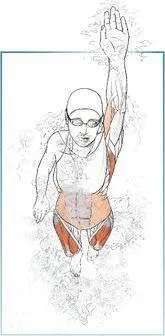
Like the arm movements, the kicking movements can be categorized as a propulsive phase and a recovery phase; these are also referred to as the downbeat and the upbeat. The propulsive phase (downbeat) begins at the hips by activation of the iliopsoas and rectus femoris muscles. The rectus femoris also initiates extension of the knee, which follows shortly after hip flexion begins. The quadriceps (vastus lateralis, vastus intermedius, and vastus medialis) join the rectus femoris to help generate more forceful extension of the knee. Like the propulsive phase, the recovery phase starts at the hips with contraction of the gluteal muscles (primarily gluteus maximus and medius) and is quickly followed by contraction of the hamstrings (biceps femoris, semitendinosus, and semimembranosus). Both muscle groups function as hip extensors. Throughout the entire kicking motion the foot is maintained in a plantarflexed position secondary to activation of the gastrocnemius and soleus and pressure exerted by the water during the downbeat portion of the kick.

Butterfly
The primary difference between freestyle and butterfly is that the arms move in unison during butterfly whereas reciprocal movements take place with freestyle. Because butterfly and freestyle have the same underwater pull pattern, the muscle recruitment patterns are almost identical. As with freestyle, the swimmer’s arms in butterfly are in an elongated position when they initiate the propulsive underwater portion of the stroke. Muscles active during the entire propulsive phase are the pectoralis major and latissimus dorsi, which function as the primary movers, and the wrist flexors, which act to maintain the wrist in a neutral to slightly flexed position. The biceps brachii and brachialis are active as the elbow moves from being fully extended at the initiation of the catch to approximately 40 degrees of flexion during the midpart of the pull. Unlike in freestyle, a forceful extension of the elbow is emphasized during the final portion of the pull, resulting in greater demands being placed on the triceps brachii. As in the freestyle stroke, both the rotator cuff and deltoid are responsible for moving the arm during the recovery phase, but the mechanics are somewhat different. Butterfly lacks the body roll that aids the recovery process during freestyle; instead, an undulating movement of the torso occurs, which brings the entire upper torso out of the water to aid in the recovery process.
Читать дальшеИнтервал:
Закладка:
Похожие книги на «Swimming Anatomy»
Представляем Вашему вниманию похожие книги на «Swimming Anatomy» списком для выбора. Мы отобрали схожую по названию и смыслу литературу в надежде предоставить читателям больше вариантов отыскать новые, интересные, ещё непрочитанные произведения.
Обсуждение, отзывы о книге «Swimming Anatomy» и просто собственные мнения читателей. Оставьте ваши комментарии, напишите, что Вы думаете о произведении, его смысле или главных героях. Укажите что конкретно понравилось, а что нет, и почему Вы так считаете.

